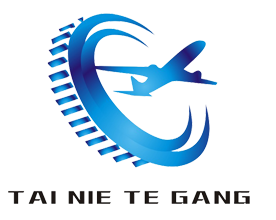
Desulfurization and denitration
The high nickel alloy has good corrosion resistance in the wet desulfurization unit, especially the content of chromium and molybdenum is increased, and the resistance to spot corrosion and crevice corrosion is strengthened.
Desulfurization and denitration
Industry Details
Nickel alloy application in desulfurization and denitration industry:
The high nickel alloy has good corrosion resistance in the wet desulfurization unit, especially the content of chromium and molybdenum is increased, and the resistance to spot corrosion and crevice corrosion is strengthened. At present, high nickel alloy can only be imported and its price is expensive, which limits its wide application. Generally, it is only used in the place with the worst corrosion environment in the absorption tower. According to different medium compositions and operating conditions during the operation of the desulfurization unit, such as pH value, temperature, chloride ion content, etc., the corrosion degree is estimated and appropriate materials are selected. In domestic FGD plants, the most common high nickel alloys are C276, C22, 59 and 926 alloys. CrNiofer1925hMo - 926 alloy (European standard EN 114529) is used in the weak and medium corrosion areas of the absorption tower, such as the spray main pipe of the spray layer; For the parts with strong corrosion in the absorption tower, for example, the oxidation air pipe in the oxidation zone uses NiCro2fer5716hMoW - C - 276 alloy (European standard EN2 1 4819), and the absorption tower smoke inlet section uses carbon steel plus 115~2mm thick NiCrofer5923hMo - 59 alloy (European standard EN2 1 4605). Of course, the slightly lower NiCro2fer5716hMoW - C - 276 alloy can also be used, which mainly depends on the design requirements. The flue gas inlet section of the absorption tower of FGD unit is at the junction of hot and cold, dry and wet. The temperature changes from 110 ℃ to 60 ℃, and the dust in the flue gas is most likely to scale here. The content of SO2 and chloride compounds in the original flue gas is quite high, so its corrosion environment is the worst in the whole tower. At present, the most common practice in China is to use composite plates or linings of C - 276 or 59 alloy to prevent corrosion in this section. For other regions, due to the high price of high nickel alloy, non-metallic materials are often used for anti-corrosion in China. C - 276 alloy is an improved forged C alloy. Its advantage is that it can be welded without solution heat treatment, and its processability has also been greatly improved. It can prevent grain boundary precipitation in welding heat affected zone, and has good resistance to local corrosion, redox medium, pitting corrosion and stress corrosion cracking. C - 22 alloy has good resistance to pitting corrosion, crevice corrosion and stress corrosion cracking. It has excellent resistance to media including chloric acid solution, mixed chloride ion and nitric acid or other oxidizing acid solutions. Alloy 59 is a versatile nickel chromium molybdenum tungsten alloy, which has better overall corrosion resistance than other nickel chromium molybdenum alloys including C - 276, C - 4 and 926 alloys. It can also resist the reducing and oxidizing environment encountered in the process. The corrosion of alloy materials used in flue gas desulfurization system of a foreign power plant under the conditions of sulfur content of 41.8%, temperature of 54 ℃ and time of 27 months is presented. It is found that the C - 276 and 59 alloys do have good corrosion resistance. If the American technology is used, the C - 276 material is mostly used, and if the German technology is used, the 59 alloy is mostly used.
Matters needing attention:
(1) Before welding, all non base metal materials such as oil stain, chalk mark and sulfide shall be removed from the joint surface and the adjacent area.
(2) Nickel base alloys have very low fluidity, so proper welding angle and minimum welding surface shall be adopted.
(3) The intermediate temperature shall be controlled at 93 ℃.
(4) Welding metal is sticky and needs flame treatment.
(5) Oxyne flame welding and submerged arc welding are not recommended.
(6) After drying, the welding rods must be stored in a constant temperature oven at 121~204 ℃.
(7) In argon arc welding (tungsten electrode or metal electrode), 100% argon protection shall be blown at the root. In shielded metal arc welding, blow on the back of the root.
(8) In argon tungsten arc welding, a constant current shall be guaranteed, and high frequency starting and gradient control shall be provided, so as to form good gas protection by flame and gas diffusion.
(9) The welding residual stress of nickel base alloy is released at about 650 ℃. Generally, post weld heat treatment is not required. If residual stress is not released, it is recommended to carry out complete solution treatment at 1149 ℃ and then rapidly water quenching.
(10) In metal electrode argon arc welding, if the oxidizing shielding gas exceeds 1%, the welding bubble shall be removed during welding. Water cooled flame heads are recommended for gas shielded metal arc welding jet converters and collaborative converters.
The method of lining nickel base alloy is:
First, fillet weld the edge of the alloy sheet with the carbon steel, and then weld the next alloy sheet with the previous one overlapped by 25mm. At the same time, electric rivet welding is used to further weld the alloy sheet with the carbon steel. To prevent leakage, it is recommended that every 24 alloy sheets (4 × 6 pieces, about 50m2) are separated into one unit, and the periphery of each unit is welded with the carbon steel structure by wire welding. Drip holes are set at the bottom of the unit to pass through the carbon steel layer, so as to discharge the circulating liquid permeating through the anti-corrosion layer to protect the carbon steel structure. Special attention shall be paid to that the welding temperature must be 30~50 ℃ higher than the critical melting point, otherwise it is easy to have unmelted defects and cause leakage. 5 Conclusion According to the different corrosion degree, the desulfurization absorption tower can be divided into the upper part, the flue gas inlet section of the absorption tower and the lower part, and different anti-corrosion measures can be taken. So far, high nickel alloy is still the best method for parts with severe corrosion. Lippen - dorf 2, Germany × Since the AIDA absorption tower of 900MW coal-fired power plant was put into operation in 1999, the nickel base alloy has been operating well, which shows that it is very important to select alloy materials reasonably and economically under the condition of meeting process requirements.











